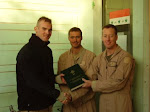Burial of the dead is still the preferred way of interment
In the new edition of the Funeral Rite, cremation is not disallowed but is discouraged by demotion to treatment in an index of the book rather than along with the prayers in the Rite. This for the reason that "the burial of the dead is more appropriate, that it expresses faith in the resurrection of the flesh, nourishes the piety of the faithful and favours the recollection and prayer of relatives and friends".
Vatican Information service news release follows:
NEW FUNERAL RITES: NO TO THE SCATTERING OF THE ASHES OF THE DECEASED
Vatican City, 30 March 2012 (VIS) - The second Italian-language edition of the "Funeral Rites", produced by the Vatican Publishing House, was presented recently at the headquarters of Vatican Radio. Among other things, the new edition contains fully revised biblical texts and prayers.
The first novelty refers to the visit to the family, which was not part of the earlier edition. Msgr. Angelo Lameri of the National Liturgical Office of the Italian Episcopal Conference, explained how "for a priest this a moment to share in the suffering, to listen to the mourning relatives, to learn about certain aspects of the deceased's life with a view to a correct and personalised presentation during the funeral".
Another change involves the revised and enriched ritual for the closing of the coffin; with a number of different texts for various situations: an elderly person, a young person, or someone who has died unexpectedly. Other changes involve the pronouncement of words recalling of the deceased at the moment of the committal, and the introduction of a broad range of possibilities for the prayer of the faithful.
However the most significant new departure, contained in the appendix of the book, concerns cremation. Msgr. Lameri explained that the issue of cremation had been placed in an appendix to highlight the fact that the Church, "although she does not oppose the cremation of bodies, when not done 'in odium fidei', continues to maintain that the burial of the dead is more appropriate, that it expresses faith in the resurrection of the flesh, nourishes the piety of the faithful and favours the recollection and prayer of relatives and friends".
In exceptional cases the rites normally celebrated at the cemetery chapel or the tomb may be celebrated at the cremation site, and it is recommended that the coffin be accompanied to that site. One particularity important aspect is that "cremation is considered as concluded when the urn is deposited in the cemetery". This is because, although the law does allow ashes to be scattered in the open or conserved in places other than a cemetery, "such practices ... raise considerable doubts as to their coherence to Christian faith, especially when they conceal pantheist or naturalistic beliefs".
The new "Funeral Rites" also focuses on the search for the meaning of death. Concluding the presentation, Bishop Alceste Catella, president of the Episcopal Commission for Liturgy, explained that "the book is testament to the faith of believers and to the importance of respect and 'pietas' towards the deceased, respect for the human body even when dead. It is testament to the pressing need to cultivate memory and to have a specific place in which to place the body or the ashes, in the profound certainty that this is authentic faith and authentic humanism".











1 comment:
It's in an Appendix in the English translation we now use. Also, as far as I know the scattering of the cremated remains is not permitted.
Post a Comment